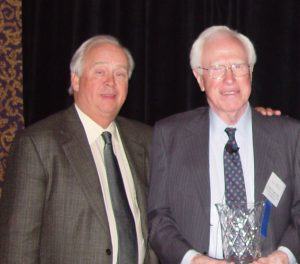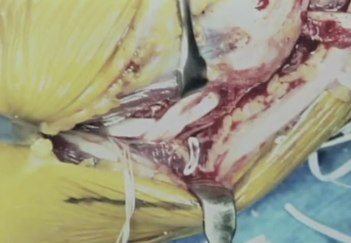One the big topics at the 2014 ASMI Injuries in Baseball course this year was our evolving understanding of the outcomes follow UCL reconstruction, better known as Tommy John surgery. As each year goes by, we have more data on the results of people who have previously had Tommy John surgery since Dr. Frank Jobe first performed the procedure.

Over the last few years we have seen very important outcomes studies from Dr. James Andrews, who undeniably performs the most Tommy John surgeries of anyone in the world. In 2010 they published the short term 2-year results of 1281 athletes over a 19 year period. More recently, they have presented their results on 256 people with at least 10 years follow up, meaning that they all had surgery at least 10 years ago.
Based on the information we have obtained from these landmark studies, we now know more about the outcomes of Tommy John surgery. However, has some of the public perceptions around Tommy John remained true or has our opinions been swayed by sensationalized media reports?
Dr. Chris Ahmad, of the New York Yankees, recently released a paper asking players, coaches, and parents about their perceptions regarding Tommy John surgery. The authors report:
- 28% of players and 20% of coaches believed that performance would be enhanced by having Tommy John surgery.
- 23% youth, 32% HS, 53% of college pitchers, 33% of coaches, and 36% of parents believed velocity increases after Tommy John surgery. (I polled my followers on Twitter and Facebook yesterday too and I would say the majority do believe that velocity increases after Tommy John surgery)
- 24% of players, 20% of coaches, and 44% of parents believed that return would occur in less than 9 months.
And get ready for the most shocking one:
- 33% of coaches, 37% of parents, 51% of high school athletes, and 26% of collegiate athletes believed that Tommy John surgery should be performed on players without elbow injury to enhance performance.
That is absolutely crazy!
Based on Dr. Ahmad’s study and recent research on this topic, I wanted to discuss many of these perceptions to help people understand that many of these are myths.
Here are 5 myths of Tommy John surgery that any player, coach, or parent needs to fully understand.
Everyone Returns From Tommy John Surgery
If 37% of parents and 51% of high school athletes believe that they should have Tommy John surgery even if they don’t have an elbow injury, then the assumptions must be that every returns to throwing, so why not?
Well, first off, Major League Baseball disagrees. Stan Conte, the Head Athletic Trainer of the Los Angeles Dodgers, presenting interesting data at the 2014 ASMI Injuries in Baseball Course.
SEE ALSO: Presentations from the ASMI Injuries in Baseball Course can be seen at RehabWebinars.com
He noted that 16% of all professional baseball pitchers, both Major and Minor League combined, have had Tommy John Surgery, and 25% of Major League Baseball pitchers have undergone Tommy John Surgery. So if Tommy John surgery was a slam dunk, that number would be closer to 100%.
According to both the short term and long term Dr. Andrews studies, 83% of pitchers return to play at the same level or higher. 83% is a really good result, but it is not 100%.
Simply put, no one wants Tommy John surgery unless they need it. Returning from surgery is not guaranteed.
There are No Complications with Tommy John Surgery

While I would certainly agree that complications can be kept to a minimum with good surgery and rehabilitation, don’t forget that Tommy John surgery does not always go smoothly and can have complications.
In the above mentioned study perform by Dr. Cain and Dr. Andrews, they noted that 20% of all the procedures performed by Dr. Andrews had complications, though 16% were considered not major complications. These can range from issues with your ulnar nerve, to infection, to even failure of the graft.
Keep in mind that this rate of complication was reported by the surgeon that is considered the best at this procedure and performs the most Tommy John surgeries.
No surgery is 100% perfect, there will always be some complications.
Recovery From Tommy John Surgery is Quick and Easy
The false sense of comfort that the general public has adopted over the years also implies that the general assumption is that recovery from surgery is quick and easy. Again, Dr. Ahmad reported that 44% of parents believe their child can return to pitching in less than 9 months.
In general, we have always said that return to play takes 9-12 months. This was based on past studies that showed this range was common. I must admit that I have seen a mild trend in baseball with people attempting to come back quick, closer to the 9 month range.
Results from Dr. Andrews’ studies have shown the average time to competition has been 11.6 months.
There are a lot of factors involved with deciding when a safe return to play show happen with each individual. These include your age, level of play, timing of the surgery, and how well your rehab has gone to date. I honestly don’t remember the last time I have had someone return at 9 months. Some of the elite level MLB players that I have worked with have returned around 10.5-11.5 months after surgery, but I really don’t recommend that for younger players.
I personally am going to stop citing the 9-12 month range, as I feel that may bring some false hope and information to many people. I am personally going to start simply saying Tommy John recover is 1 year. I may individualize this for each person, but as a rule of thumb, I think elite level players returning around 11 months and amateurs around 12 months is probably in the athletes’ best interest.
Assume going into surgery that it is going to be 12 months before you return to competition.
Velocity Improves After Tommy John Surgery
Of all the myths discussed so far, I think the myth that velocity increases after surgery is likely the most important to dispel. This fact has been sensationalized in the media for years.
Two preliminary research projects have recently been conducted that looked at MLB pitchers velocity before and after having Tommy John Surgery. Rebecca Fishbein presented a report at the 2013 Sabermetrics meeting in Boston. She analyzed the average velocity of 44 MLB pitchers before and after undergoing Tommy John surgery between 2007 and 2011.
She reported no significant difference with velocity after surgery (she actually found a mild 0.875 mph decrease in velocity, though this was not significant). Stan Conte reported a similar finding at the 2014 ASMI Injuries in Baseball Course in 32 pitchers from 2007 to 2012. In Stan’s study, there again was no significant difference in velocity before and after surgery (he also found a 0.79 mph drop in velocity, but again not statistically significant).
I personally have seen many players increase their velocity after surgery, but the important point here is that on average, velocity does not change. There are many reasons why it may go up in some people. Perhaps they were pitching with a deficient ligament or in pain for several years, perhaps they never worked out before surgery, or perhaps the hit a big growth spurt while rehabbing.
Despite popular belief, velocity has not been shown to go up in MLB pitchers after Tommy John surgery.
All Tommy John Rehabilitation is the Same

This last myth is personal one for me! Baseball pitchers are such unique athletes that to truly get the best outcomes, you really need to work with a person that has extensive experience. There are many subtleties and things to watch out for that could easily slow down the rehab process if you aren’t on the look out.
I have spent my entire career working with baseball players and I can tell you I continue to learn more and more about what makes them unique every year. Just when you think you have figured out something, someone comes around and amazes you with what they can do with their body.
Tommy John rehabilitation requires the understanding of the unique attributes of the baseball pitcher, the unique nature of how these injuries occur, and knowledge of the stress involved while throwing during the recovery. Anyone can follow a protocol, it is understanding how to individualize the protocol to each person to avoid speeding up and slowing down the program like a roller coaster.
Losing range of motion is going to be a problem, assuring the ulnar nerve isn’t stressed is an issue, gradually progressing activities to make sure the ligament is ready to start throwing is always important, and controlling strength and conditioning workloads while progressing a throwing program takes skill and experience.
Everyone rehabbing after Tommy John surgery is going to have some bad days and even bad weeks. It is how these periods are handled that will assure you return to competition safely and effectively.
Summary
In summary, 83% of people undergoing Tommy John surgery have been shown to return to play at the same level or higher, without an increase in velocity, in 11.6 months [Click Here to Tweet].
Tommy John surgery is not a slam dunk, so the best strategy is ALWAYS to avoid surgery as much as possible. While this isn’t always possible, programs should be built that work on enhancing performance AND reducing injuries in baseball players.
SEE ALSO: How Baseball Players Can Enhance Performance While Reducing Injuries
Despite popular belief, if you have Tommy John surgery you are not guaranteed to return to your previous level without complications, and rehab is not a quick and easy process that results in improved velocity.






